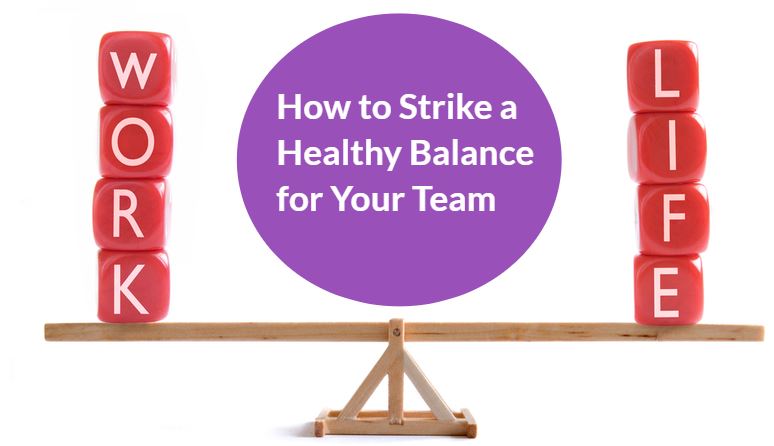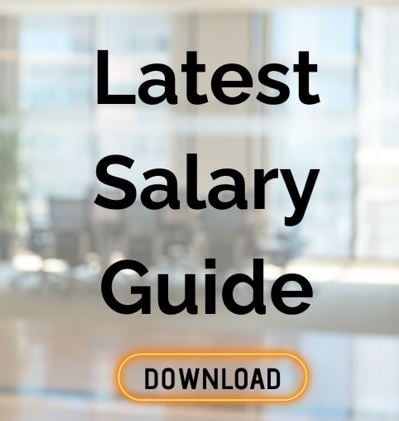Recruitment has changed considerably over recent years with scarcity of quality candidates meaning that the current job market is predominantly candidate-driven. With this in mind your candidate attraction process and techniques need to reflect this.
Harvard Business Research from 2019 indicated the majority of people who took a new job weren’t actively searching for one but instead were approached directly.
As it’s getting harder to find and recruit the right employees, your organisation must do everything it can to stay attractive the right kind of talent. This does not mean simply changing your marketing messages or coming up with an arbitrary ‘company values’ slogan – it goes much deeper than this
The companies who will win the battle for talent now are the basically the ones who understand, at every level what an accomplished employee is looking for.
In this detailed article, we take a look at these essential elements and demonstrate how your organisation can embrace them to be the Company that every employee wants to be a part of.
1. The Candidate Experience
First, let me explain about the candidate experience, which is the totality of each candidate’s encounter with your company. Because the key to securing great employees is an excellent recruitment process whether than involves use of an outside agency or not.
The candidate experience describes the entire process that each candidate goes through when applying to your company, from seeing the first job advert, or being contacted by a recruiter, to the job offer and salary negotiation, or the rejection phone call.
A good candidate experience looks something like this-
-
The job the candidate applies to is real and in immediate need of filling.
-
The job description is clearly written and thorough.
-
The application process is simple.
-
You follow up the candidates at every stage of the process – yes, this means an email to every unsuccessful candidate who applies.
-
You give the candidates who are selected for an interview a good idea of what to expect.
-
You inform unsuccessful candidates at the earliest possible point.
-
You give, and are welcoming of, feedback on your recruitment process.
Unfortunately for many candidates, this is not what their candidate experience looks like.
The biggest complaint from candidates about a negative candidate experience is not hearing back after applying, followed by non-correspondence even after the candidate has had an interview.
Additionally, tips to make your candidate experience jump from ‘good’ to ‘great’ include-
-
Email unsuccessful candidates from a personal email address, rather than ‘careers@...’ where possible.
-
Try to reply to candidates within a two-day time-frame (this is not possible for positions where there is a large volume of applicants, but the general rule is the sooner, the better).
-
Even if your company uses them in its recruiting process, avoid including candidate reference numbers in your correspondence as they depersonalise the process.
At best, a good candidate experience leaves even rejected candidates with a positive perception of your company. At worst, it can turn disgruntled candidates against your organisation, they tell others not to apply to your future vacancies, and they boycott your products or services.
So, the candidate experience is all about making sure current and future candidates view you as a reputable employer with a trustworthy recruitment process. But during this process, you will be looking for the candidates with the best skills, experience and attitude to add real value to your organisation – what is it that they are looking for that will compel them to say ‘yes’ to your job offer?
2. The ‘Right’ Culture

Culture is fundamentally important to get right, because if your candidate is not a match for your organisation culturally, then the hire will ultimately not work out – be that in six weeks or six months.
There is a significant volume of data out there on the topic of ‘company culture’, and most of it has the same message; make sure your organisation has a strong teamwork ethic, create a positive working environment, offer your employees plenty of benefits like early finishes, gym memberships, etc.
But what a lot of organisations fail to acknowledge is that ‘positive’ company culture is not a one-size-fits-all approach. Of course, you can’t please everyone.
What one candidate regards as a perfect working environment might be too quiet for another; one candidate might view being based in the heart of the city a bonus; another will see it as an inconvenience. Remember that recruitment is a two-way street , it's no longer just about whether the organisation wants you!
You should have a conversation with your candidates about what kind of culture you provide and if this corresponds with what they are looking for, at the earliest available opportunity. Employers who strive to create a company culture that is accommodating to every employee will be viewed with high praise.
While this might be easier said than done, there are steps you can take to make every candidate sure that you are an accommodating employer when it comes to culture.
Do you have a shared office space? If so, can you provide booths or separate working areas for those who prefer a quieter space?
Is it part of the culture that everyone goes for drinks on a Friday? Don’t make those that don’t want to join in feel ostracised.
Offer a flexible management style where employees can come for you to for as much guidance as they need.
When you think about it, there are many easy changes you can make to ensure your employees feel that you are accommodating their needs.
3. Work-Life Balance

While many organisations might think of this concept in the same breath as company culture, it deserves its own section.
Why?
Research increasingly highlights the fact that happy employees are more productive, making work-life balance a natural extension to creating a positive company culture.
A recent Acas study conducted with employees found that;
-
53% stated that balancing life and work was the top issue for employees throughout their working lives,
-
While 51% reported ‘staying healthy and feeling well’ came second, with 51%.
The two, it can be argued, are inextricably linked. With a rise in the awareness of mental health issues, both employee and employer are more aware of the importance of good mental health in the workplace.
Despite fears by some employers, allowing employees considerate work-life balance arrangements does not decrease productivity; it has the opposite effect.
Overworking staff hurts productivity, as it leaves employees stressed and exhausted and can lead to burnout. Employers should encourage staff to take their allotted breaks in full and to leave work on time.
Mental health sick-days were the fourth most cited reason for employee absence in 2019. Mental health conditions were the fourth most common reason given for absence, accounting for 12.4 per cent of sick days.
A new employee who quickly realises that their work-life balance is becoming weighted in one direction will be looking for a new job faster than you might expect.
For example, here at LWR we are trialling a 4 day working week which you can read about here.
4. Respect

Management styles and HR practices are changing. It is becoming apparent that managers who use intimidation or undue pressure, while they might produce short-term results, in the long-term negatively affect the business and staff morale.
Ultimately, domineering managers who fail to understand their employees will cause their team members to underperform, become unhappy and eventually leave.
Mutual respect between employers and their employees is more imperative than ever in the workplace. The #metoo movement has been the catalyst for a desire to highlight accountability in organisations across all sectors.
The acclaimed business performance book Crucial Conversations authored by Ron McMillan, stated “Respect is like air. If it’s present, nobody thinks about it. But if you take it away, it’s all people can think about.”
You build a respectful culture on a foundation of trust, honesty, compassion and excellent communication. These are the qualities that you must hire into your business to create a culture of respect, which will, in turn, attract the best employees to your organisation.
Other ways to demonstrate respect to your employees is to give them a high level of autonomy, and not micromanage them. Employee dissatisfaction due to a lack of mutual respect between employer and employee can often be one-sided, which I will talk about in the next section.
5. Inspiring Manager
We’ve made it to around halfway through this report, and now we come to what is arguably the most critical point – your management style.
The old adage ‘people don’t leave jobs; they leave managers’ is as accurate as ever – and here’s why.
A Gallup poll found that 70% of variation between high workplace engagement and poor performance can be explained by the quality of the manager or team leader.
Additionally, a similar poll found that 50 per cent of employees who quit cite their manager as the primary reason. That’s half of everyone polled who out-right had no qualms admitting that they would still be in their role if it weren’t for the manager.
Think about the costs that your business, and indeed all businesses, spend on recruiting each year. That number could be significantly reduced if managers were more receptive to their employees.
So, how can managers ascertain if they are connecting with their employees in the right way, or if they are unwittingly driving great employees to job boards?
If you are at all concerned that you are not leading your team to the best of your abilities, and you want to improve your management skills, the following are some tried and tested suggestions:
Be Present
One of the easiest ways, which is often overlooked by managers, to connect on a genuine level with your employees, is to be present with them. Talk to your employees, and not just a cursory good morning. If you don’t have a legitimate interest in your team members, then this raises serious questions about your aptitude as a manager.
Actively Listen
There are two types of listening – listening merely to respond and active listening. Many people, even managers, fall into the trap of waiting for the other person to stop talking just so that they can respond - this is a natural reflex: as humans, we want to get our point across.
Active listening is the process of empathising with the speaker and genuinely seeking to understand what they are saying. This type of listening always produces better results, especially in the workplace. Problems are solved easier, you make faster decisions, and employees feel understood when you actively listen to them.
Be Transparent
Transparency and honesty are the key to happy employees.
Globally, we have seen an increasing trend in people demanding transparency in every aspect of their lives. In where our food comes from, in the companies we chose to buy our products and services from, and in the workplace, too.
Create an environment of transparency by having an open-door policy, responding quickly to employees concerns or requests and by simply being honest with your employees.
Be Fair
Finally, employees are looking for fairness in their manager. It is still, sadly, a common complaint among employees that their manager has ‘favourites’ or an unpredictable management style. You are only human, so naturally, you will make mistakes; sometimes there will be discrepancies in your managing, and you can’t be everywhere at once.
But touching on my previous point, part of being a fair manager is the ability to recognise, accept and be honest about your mistakes. Acknowledge if you haven’t been fair, and endeavour to be more objective in future.
Being a great manager involves being humble; more so than many people realise. And with the rise in individuals speaking out against poor practices and bad managers, there is no room for outdated and unfair management styles anymore.
6. Development of Skills
Employees are looking to work with organisations that will help them develop, both personally and professionally. That means offering stimulating workplaces and opportunities, and seeing development not as an ‘add-on’, but as part of the company ethos.
The same LinkedIn survey I mentioned previously also reported that employers found ‘getting employees to make time for learning’ their no.1 development challenge.
It’s not easy to implement a new system of learning and development into your organisation, especially if your employees are not used to it. It can be an unwelcome distraction from the real crux of their day – their work. To combat this, make it part of your core values – and lead by example.
An acquaintance of mine, who is an MD of her own company, has written into the company ethos that every team member spends half an hour a day training on a subject they have pre-chosen, to better their understanding of a particular topic or process. That’s right: every team member, including herself.
It is an accepted part of the company day, and the benefits are clear. The team are happy that they are given the opportunity to develop skills and understanding around topics that they know will be of value to them.
Does this sound like something that you could implement in your organisation?
As humans, we naturally want to grow, to improve and to seek out new challenges. Any employee who finds themselves facing a brick wall in terms of development will usually start to look elsewhere for their development fix.
7. Opportunity for Growth
Growth opportunities are also an imperative factor in keeping happy and engaged employees in their jobs, and not browsing the job boards of your competitors.
A LinkedIn Workforce Learning Report found that a staggering 94% of employees would stay longer with an employer if the company invested in their careers.
In the past, development opportunities were only given to those at a ‘certain’ level within companies. Now, growth and development for all employees is an expected norm.
When was the last time you assessed your criteria for promotion? If there are certain positions in your company which are exempt from promotion prospects, think about how you would feel if you were an employee in this role.
A clear hierarchy of promotion and growth prospects is a must for any company looking to attract top talent. If you had the chance to join a company where you can quickly rise through the ranks or one where you will have to wait for your superior to leave before you are considered for a promotion - which would you prefer to work for?
As a manager, you have the perfect opportunity to coach and mentor your employees as they grow within their roles.
Employee development shouldn’t be brought up at periodic meetings and then forgotten about. Ask your employees how they wish to be developed and then put in place a development plan, with time frames such as one, three, six months and yearly goals. When employees help create their development plan, it is much easier for them to have enthusiasm and passion for their roles.
8. Challenging Work
As an employer, you need to strike the right balance between making sure your employees are not overworked, but also that their work is challenging enough.
In a 2018 employee engagement and retention survey, ‘lack of challenging work’ was cited as the third most significant reason for employees leaving their posts, behind insufficient pay and limited career paths.
Employees need to feel that they are continually learning; repeating the same processes over and over does not provide this.
People generally have the potential to do much more than they are aware of, but this can only be realised when they are presented with an opportunity to do so.
Challenging work does not mean deliberately giving your employees tasks you know they will struggle with. It is about individually assessing each employee, their strengths and weaknesses, finding out which areas they want to develop, and planning this into the tasks you set for them.
9. A Concise Recruitment Process
Finally, a point about your recruitment process, which is instrumental in attracting and securing the best calibre of candidates.
As I mentioned in the very first section, your candidate experience is the culmination of what candidates experience when in correspondence with your company about a vacancy; and it is here that your process becomes pivotal.
If you have a focus on recruitment because you have one or more vacant positions, and you want to attract only the highest quality of candidates; make sure you nail down your recruitment process before you start advertising.
A week might not seem like a long time to you, but to the candidate, it can mean the difference between being excited about your organisation, and frustrated.
A recent recruitment survey found that almost six in ten workers (57%) said that waiting to hear back from employers was the leading cause of frustration during their job search, and nearly a quarter (23%) said that they lose interest in a firm if they don’t hear back from within a week.
Suggestions for a more concise recruitment process include-
- Be considered about whom you hire – hiring is one of the most critical decisions a company makes, but don’t string the wrong candidates along because they are the best of those who applied, even though they don’t match your criteria.
- Be responsive – two days is the optimum time to reply to potential candidates you are interested in taking further along your hiring process. At the same time, let unsuccessful applicants know as soon as you can that their application, on this occasion, wasn’t successful.
- Have a recruitment timeline before you start – map out the days of the month by which you will have contacted the first interviewees, when the second interviews will take place, and the date you will inform the successful candidate. Please make sure everyone who needs to be present for the interviews is free when they need to be.
- Consider the available processes and systems you can use. Here at LWR we have our engage platform which is very popular and aids both the employee experience and the recruitment process. You can find out more about this here as well.
Summary
Whether you are looking to hire new talent or retain your best employees, take it back to basics with everything we have outlined in this guide.
As an employer, it can be easy to feel overwhelmed by the torrent of information which seems to be out there on how to keep your employees happy. But what they want isn’t complicated or difficult – it comes down to simple, traditional values.
Get this right, and you will consistently attract the highest quality candidates to your organisation.
Can We Help?
We have placed and filled over 100,000 temp and permanent assignments over the last 30 years so have a range of techniques, ideas and platforms which could help you. Why not call us on 0113 367 2880 have a conversation with one of our team. Alternatively drop us an email here or check out are Testimonials and Case Studies.
PS: You can also check out are Client Showcase Video here.






.png)



.png)

-1.jpg)







.png)







